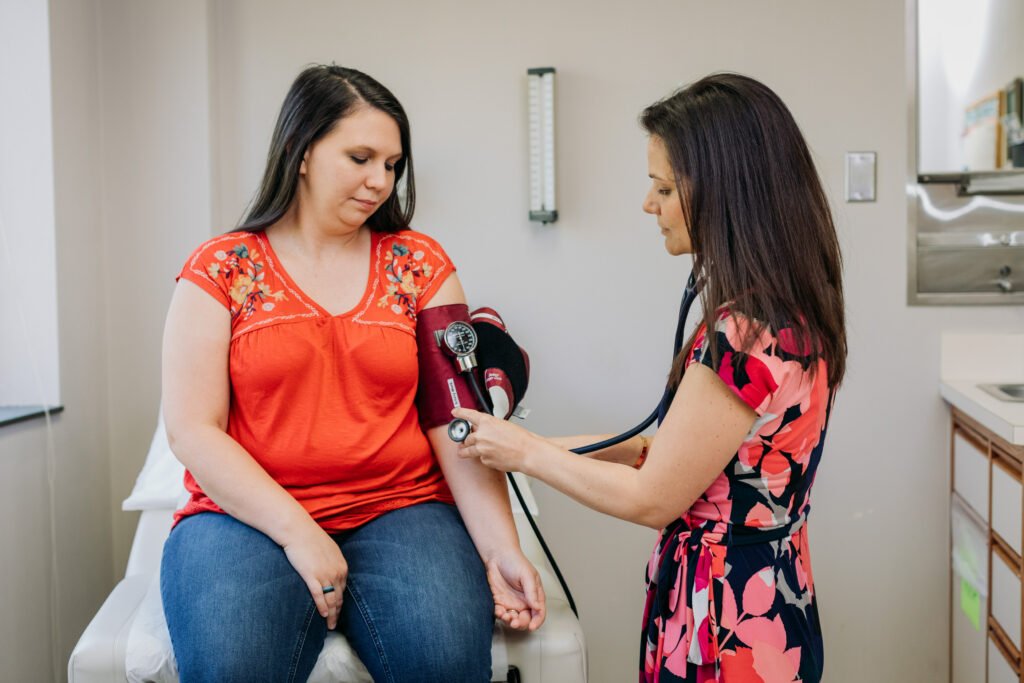WHAT IS HYPERTENSION OR HIGH BLOOD PRESSURE?
When your heart pumps blood, the force of the blood flow against the artery walls is called blood pressure. If this force is too high, it can lead to heart disease and other health problems. High blood pressure is very common, and it may develop gradually, or it may be caused by an underlying condition such as kidney problems, tumors or medications.

If untreated, high blood pressure can lead to:
- Heart failure
- Heart attack
- Stroke
- Aneurysm (a bulge in weakened blood vessels that may rupture and become life-threatening.)
- Vision loss (caused by narrowed blood vessels in the eyes)
- Difficulty with memory
- Kidney failure
BLOOD PRESSURE READINGS: WHAT IS THE NORMAL RANGE?
When your blood pressure is evaluated, it is usually expressed as a range of two numbers, described as one being over the other (such as “120 over 70”). These BP numbers provide vital information that can help your doctor determine your course of treatment.
TOP BLOOD PRESSURE NUMBER
The top number is called the systolic blood pressure. It measures the force of the blood through the arteries when the heart beats. A normal systolic blood pressure is below 120. If this number is between 120 to 139, it can indicate borderline high blood pressure (called prehypertension.) When the number is 140 or higher, it is considered high blood pressure or hypertension.
LOWER BLOOD PRESSURE NUMBER
The lower number is called diastolic blood pressure. This measures the pressure in the arteries when the heart is resting between beats. A normal diastolic pressure is less than 80. If it is between 80 and 89, it could indicate borderline high blood pressure, while a reading of 90 or higher is considered to be high blood pressure.
What Are the Risk Factors of Hypertension?
High blood pressure is very common, and the risk of developing high blood pressure increases as you age. Men are more likely to develop high blood pressure in middle age, while women are more likely to develop it after menopause. It is also more common among African-Americans and those who have a family history of high blood pressure. Recent studies show that when blood pressure problems are treated sooner, the chances of developing problems drops significantly.
- Being overweight or obese
- Using tobacco (smoking or chewing)
- Drinking too much alcohol
- Not having enough potassium and vitamin D in your diet
- Lack of exercise
- Stress
SYMPTOMS OF HYPERTENSION
There may be none. In fact, most people with high blood pressure show few, if any signs or symptoms. However, when symptoms do occur— such as dizzy spells, dull headaches or frequent nosebleeds— it is usually after blood pressure has reached a life-threatening level.
Because hypertension can be a silent killer, it is important to have your blood pressure taken regularly as a part of a routine doctor’s appointment. If you do not have a regular physician, we will be happy to schedule an appointment for a physical.
HOW TO LOWER HIGH BLOOD PRESSURE
There is no “one size fits all” treatment for high blood pressure, which is why it is important to have regular physicals and communicate with your physician. Your treatment may depend upon what is causing your high blood pressure, the stage of your high blood pressure, and whether or not you have other medical problems at the time of diagnosis. Our physicians can customize an individual treatment plan for you that may include dietary changes, medication and lifestyle changes.
